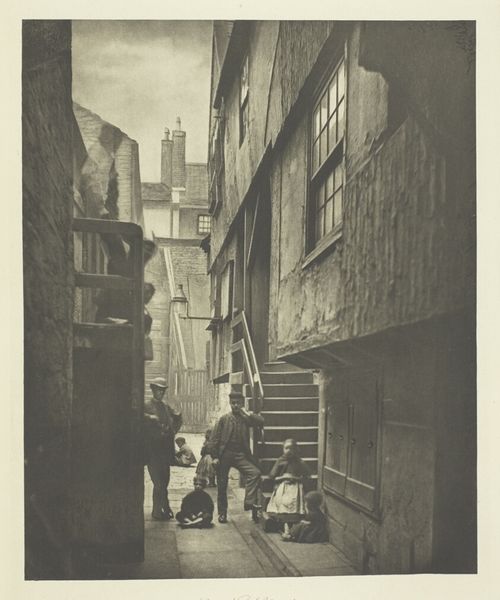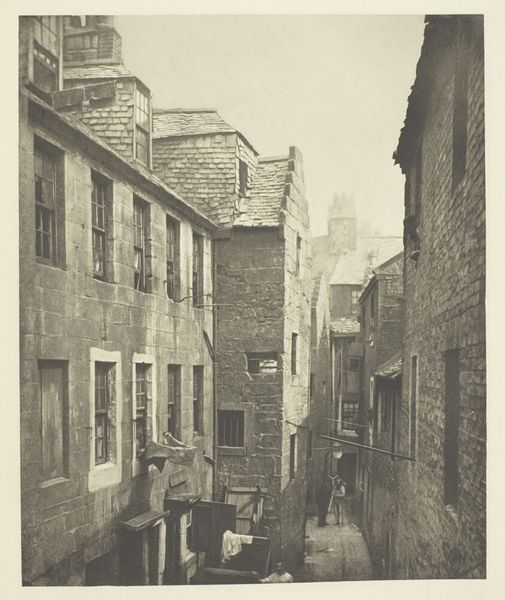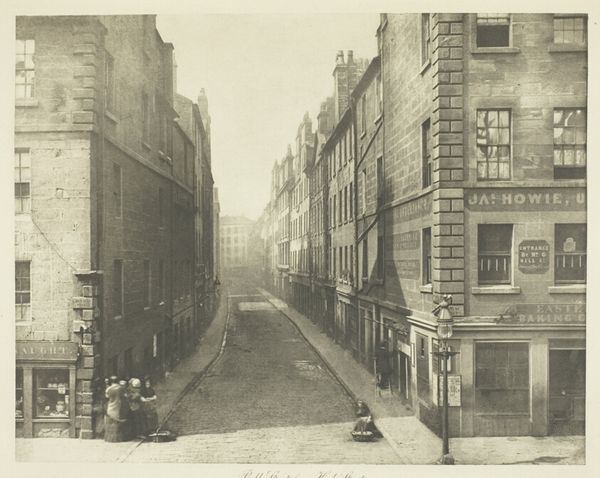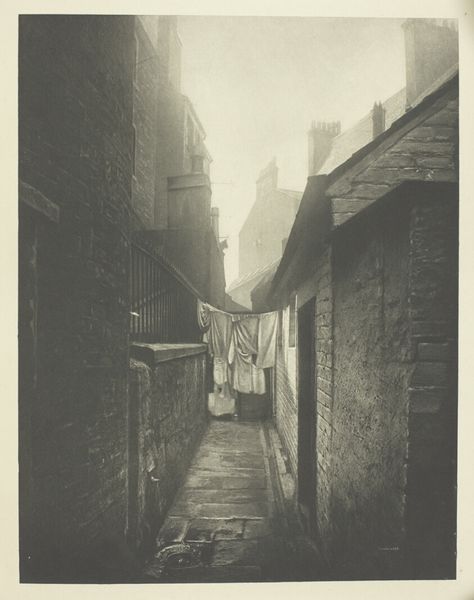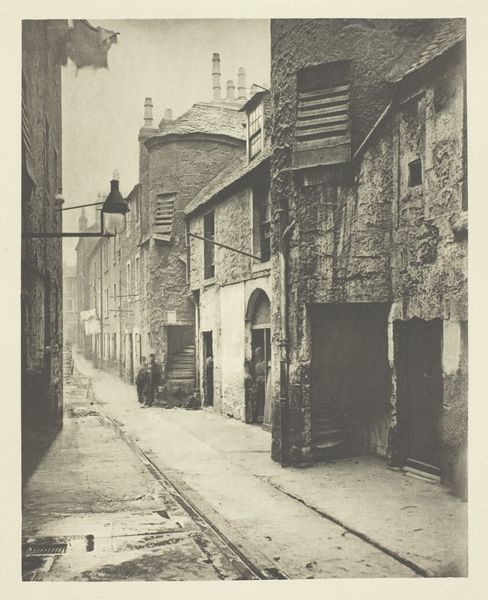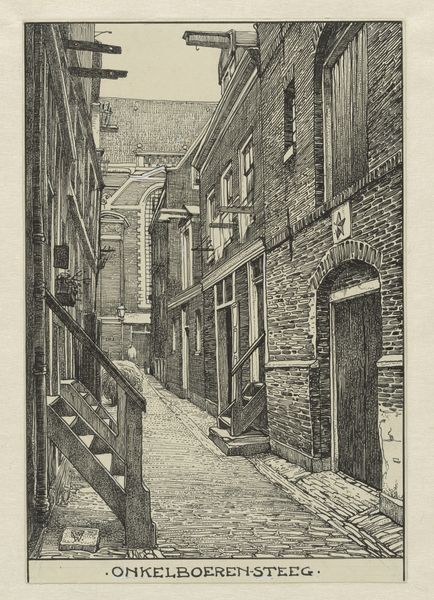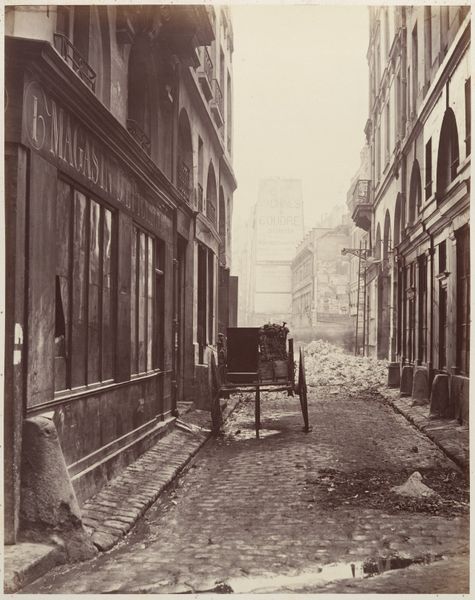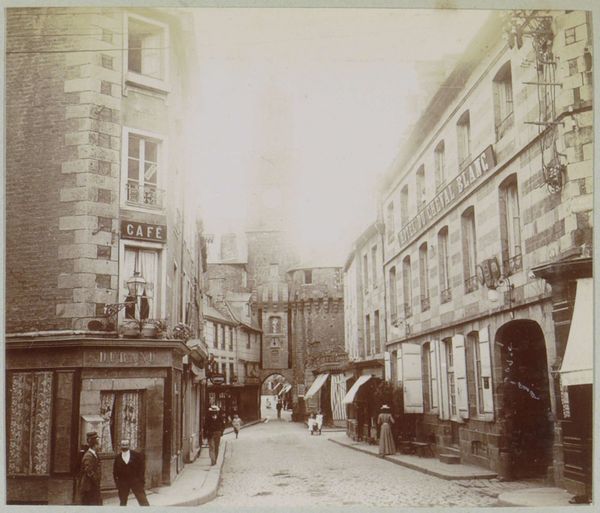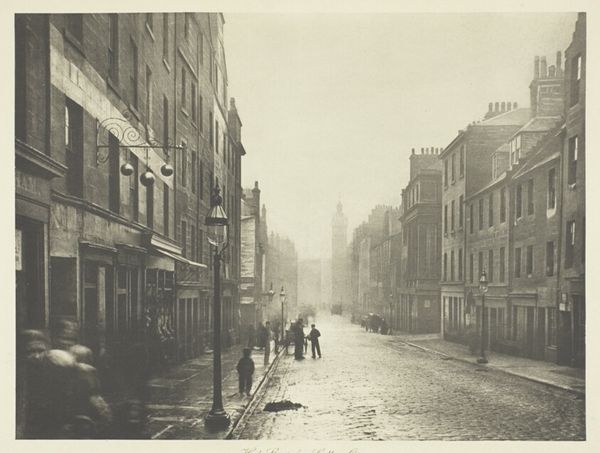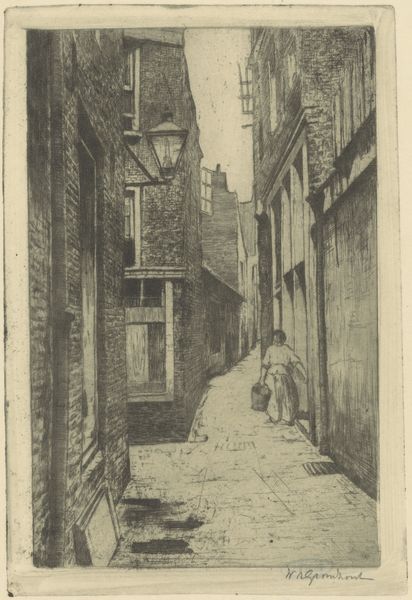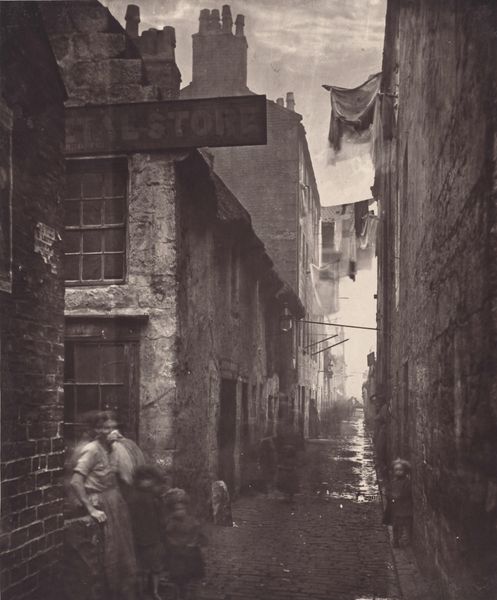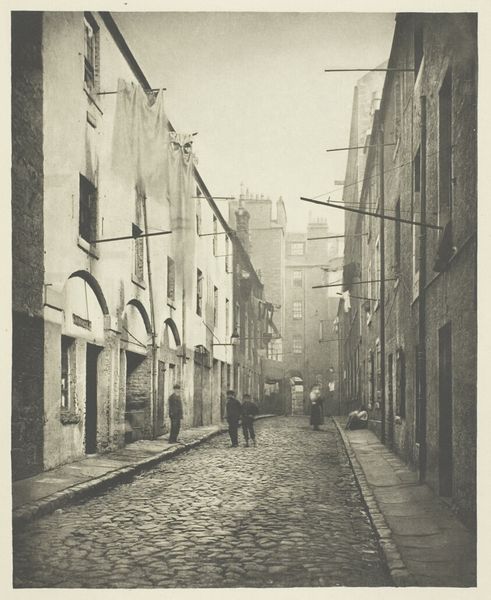
photogravure, photography, gelatin-silver-print
#
photogravure
#
pictorialism
#
archive photography
#
photography
#
historical photography
#
england
#
gelatin-silver-print
#
monochrome photography
#
19th century
#
cityscape
#
genre-painting
Dimensions: 7 x 5 1/2 in. (17.78 x 13.97 cm) (image)15 x 11 in. (38.1 x 27.94 cm) (mount)
Copyright: Public Domain
Curator: Lydell Sawyer's 1889 photogravure, "The Castle Garth," captures a scene from old England with such evocative detail. I am curious to hear your take. Editor: It’s immediately atmospheric, a scene rendered with almost ghostly figures emerging from the cobbled streets and looming architecture. A definite sense of faded glory permeates the whole image. Curator: Sawyer worked during the rise of Pictorialism, and this piece certainly exemplifies the movement's desire to elevate photography to fine art through soft focus and painterly techniques. Considering the rapid industrialisation of the time, perhaps it’s a longing to look back at a pre-industrial England. The working class performing some sort of labor… Editor: It's impossible to ignore that these are precisely the lives rendered invisible within grand historical narratives. Sawyer's romanticized portrayal, although framed through the artistic lens of the era, serves as a documentary glimpse into lives marginalized by official records and forgotten urban spaces. Curator: Absolutely. Sawyer presents this narrow alley in Newcastle as both historical record and art object. The stark light, so central to Pictorialist photography, helps transform ordinary street life into art. Look closely; what's striking is the very clear class distinctions. Notice how everyone is situated within the economic strata of the period? Editor: Yes, and even in a seemingly candid snapshot like this, it reveals the staged realities of the time. A crucial contribution Sawyer makes is not just depicting England’s history but also offering visual testaments of Victorian social arrangements. This speaks directly to how the past informs—and sometimes deforms—the present. Curator: That's a great point. To step back, in this context the choice of photogravure, a process using etching and photography, further distances the artwork from straightforward documentation. It becomes a study of texture and tone. Editor: The technical choice enhances this work, especially because it reflects how visual mediums play active roles in molding society's consciousness of heritage and equity. So many layers interact, challenging the myth of photography as a merely unbiased record. Curator: It’s quite intriguing, after revisiting this, how past-facing art can make one reflect deeply on contemporary themes. Editor: Precisely, the echo of “The Castle Garth” resonates far beyond the bricks and mortar; Sawyer has opened a portal to crucial discussions about our present.
Comments
No comments
Be the first to comment and join the conversation on the ultimate creative platform.

